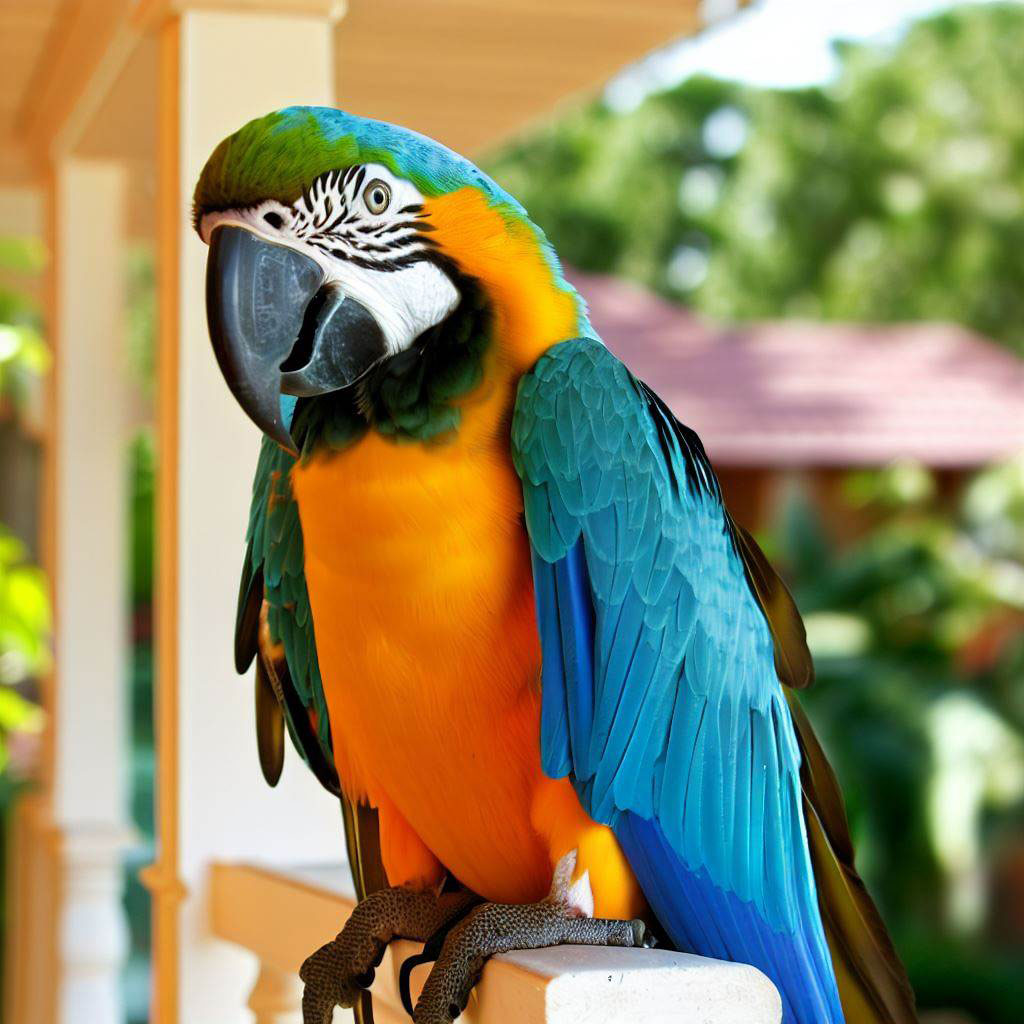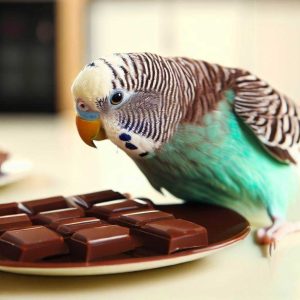What Are The Best Talking Birds for Beginners?
Birds don’t just sing; they talk. Yes, talking birds have taken the pet world by storm, and with good reason.
Table of Contents
Introduction:
Birds have been an integral part of human history, fascinating us with their melodic symphonies and colorful splendor. But amongst this vast avian world, a particular subset of birds holds a special place in our hearts. They don’t just sing; they talk. Yes, talking birds have taken the pet world by storm, and with good reason. Have you ever imagined having a pet that could mimic your laughter or even greet you with a “good morning”? The idea itself is enchanting. And for those considering stepping into this fascinating realm, understanding the best talking birds for beginners is crucial.
Brief overview of talking birds and their popularity as pets
The allure of talking birds is timeless. From ancient royal courts to modern homes, these vocal wonders have been a source of amusement, intrigue, and companionship. Why? Well, they bridge the communication gap in a way no other pet does. While a cat might purr and a dog might bark, a talking bird can potentially mirror our own language back to us. It’s a connection like no other. Imagine a Budgerigar cheerfully echoing your sentiments or an African Grey Parrot asking about your day. These moments transform a regular pet-owner bond into something extraordinarily unique.
With the rise of social media, the popularity of these talking wonders has only soared. Video clips showcasing a parrot hilariously replicating a phone ringtone or a Budgie singing along to popular songs have garnered millions of views. But beyond their mere entertainment value, talking birds, especially when chosen wisely, can become cherished family members. Their intelligence, paired with their vocal abilities, fosters a deep bond that many find incredibly fulfilling.
Importance of choosing the right bird for beginners
For a budding bird enthusiast, diving headfirst into the realm of talking birds without proper guidance can be overwhelming. Not all talking birds are cut from the same cloth. While some are vocally gifted, others are more reserved. Some might require rigorous training sessions, while others pick up phrases organically.
Choosing the right bird isn’t just about finding the best talker; it’s about understanding your own commitment level, available time, and the kind of bond you hope to foster. For instance, while African Grey Parrots are renowned talkers, they require significant attention and mental stimulation. On the other hand, Budgies, often hailed as one of the best talking birds for beginners, are smaller in size and might be a more manageable choice for someone new to the avian world.
Embarking on the journey of pet ownership, especially with talking birds, is a decision that requires informed choices. As you sift through this guide, we aim to equip you with the knowledge and insight needed to find your perfect feathered companion from the array of best talking birds for beginners.

Best Talking Birds for Beginners: Easiest Birds to Teach to Talk
Taking a plunge into the world of talking birds is thrilling. But as a novice, you might wonder, “Which bird will pick up words and phrases the quickest?” While there’s a plethora of talking birds out there, some are naturally more adept at picking up human speech than others. For those seeking the best talking birds for beginners, there are two standout options.
Budgerigars (Budgies)
Overview and traits:
Known affectionately as ‘Budgies’, these small parrots are perhaps one of the most popular pet birds globally. Originating from Australia, Budgerigars are often recognized for their vibrant green and yellow plumage, though selective breeding has led to a variety of color mutations. They’re sociable, lively, and brimming with personality, often forging deep bonds with their owners.
Why they’re easy to train:
Budgies are naturally inquisitive and receptive, two traits that make them excellent learners. Their high levels of intelligence, paired with their innate desire to socialize, make them more prone to mimicry. For instance, a Budgie exposed regularly to phrases like “Good morning” or “Hello” might start parroting these back after a while. The key is repetition.
The more you converse with your Budgie, the higher the likelihood of them mimicking your speech patterns. Given their relatively small size and undemanding nature, Budgies have earned their reputation as one of the best talking birds for beginners.
Cockatiels
Characteristics and talking ability:
Cockatiels are native to Australia and are often seen as the larger cousins of Budgies. Flaunting a distinctive crest on top of their heads, these birds come in a mix of grey, white, and yellow shades. They’re friendly, curious, and often display a charming blend of independence and affection. When it comes to talking, male Cockatiels typically outshine females, although both genders are capable of learning phrases and tunes.
Tips for training cockatiels to talk:
- Start with Simple Phrases: Begin with easily distinguishable words or phrases like “Hi” or “Bye-bye.” Cockatiels have a softer voice compared to other parrots, so clarity in your words can aid in their learning.
- Incorporate Whistling: If there’s something Cockatiels love more than talking, it’s whistling. Integrating melodies or tune sequences can often be a fun way to engage with them. Don’t be surprised if your bird suddenly whistles your favorite TV show’s theme tune after hearing it multiple times!
- Regular Interaction: Talk to your Cockatiel daily. The more they hear your voice, the more likely they are to mimic. Set aside dedicated “conversation” times, ideally during their most active periods.
- Positive Reinforcement: Reward your Cockatiel with a treat or affectionate petting when they successfully mimic a word or sound. This positive association can motivate them to talk more.
In your journey to discover the ideal talking companion, both Budgerigars and Cockatiels shine as perfect candidates, especially for beginners. With patience, consistency, and the right techniques, these birds not only become great talkers but also cherished companions in your home.
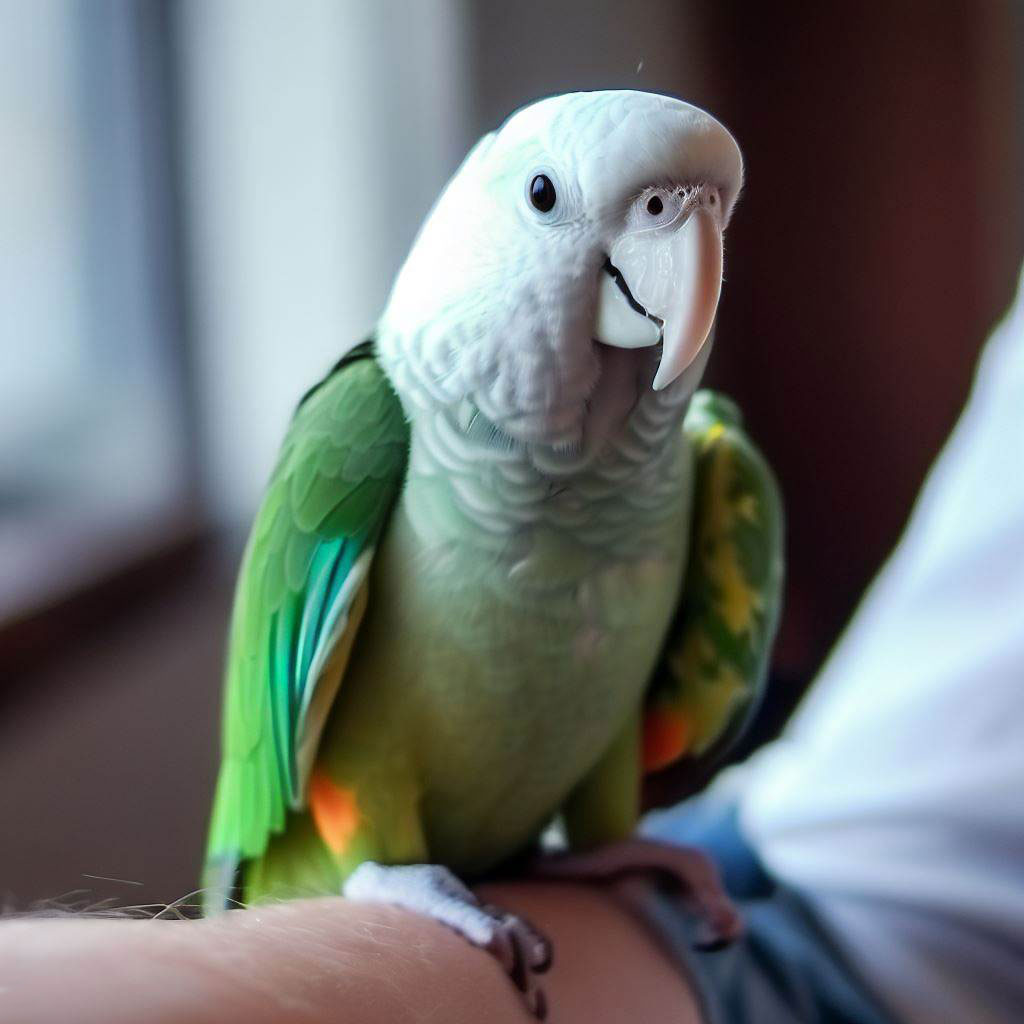
Masters of Mimicry: Birds Best at Talking
While every talking bird offers its unique charm and allure, there are those that stand towering in the world of mimicry. These birds don’t just talk; they converse, they engage, and they sometimes even debate with their reflections. If you’re seeking the real maestros, the virtuosos of avian vocals, then you’re looking for the best talking birds for beginners that fall into a special category of their own.
African Grey Parrots
Description and talking ability:
Native to the dense rainforests of West and Central Africa, the African Grey Parrot boasts a blend of grey feathers with a striking red tail. Beyond their appearance, what truly sets them apart is their unparalleled intelligence and linguistic abilities. Equipped with a vast vocabulary, African Greys don’t just mimic – they comprehend. They can associate words with their meanings, making them one of the most advanced talkers in the avian kingdom. It’s not unusual for these birds to develop vocabularies of over a thousand words.
Recognition in popular culture:
African Grey Parrots, due to their talking prowess, have often found themselves in the limelight. Perhaps the most renowned African Grey is Alex, a parrot trained by Dr. Irene Pepperberg. Alex’s cognitive abilities were so profound that he could identify colors, shapes, and even express basic emotions. His skills were often compared to those of a young child, and his story was featured in numerous scientific journals, documentaries, and news outlets. Movies and TV shows also regularly portray African Greys, further engraining their status as the crème de la crème of talking birds.
Amazon Parrots
Variety of species and their vocal abilities:
Amazon Parrots, originating from the tropical regions of the Americas, encompass several species, each with its distinct coloration and personality. Common species like the Yellow-naped Amazon, Blue-fronted Amazon, and Double Yellow-headed Amazon are particularly notable for their vocal talents. Their deep, resonant voices can imitate human speech with startling clarity. Moreover, Amazons are not just talkers but gifted singers too, often crooning along to tunes with gusto.
Importance of social interaction:
For Amazon Parrots, talking is more than just a trick; it’s a form of social interaction. In the wild, these birds are incredibly social, often found in large flocks and engaging in complex vocalizations. When domesticated, they transfer this need for interaction to their human counterparts.
- Consistent Communication: For an Amazon Parrot to tap into its full talking potential, regular, meaningful interaction is crucial. Hold conversations, ask questions, and even try singing together.
- Emotional Bonding: The deeper your bond, the more your Amazon will want to communicate. Build trust through play, shared activities, and gentle training.
- Learning Environment: Expose your parrot to varied sounds, music, and conversations. The richer their environment, the more they’ll learn and replicate.
When seeking the pinnacle of avian mimicry, both African Grey Parrots and Amazon Parrots stand out. They’re not among the best talking birds for beginners but are unparalleled in their vocal talents, turning any home into a stage for their mesmerizing performances.

Starter Birds for Novice Owners
Starting on your avian journey can be both thrilling and slightly daunting. With a plethora of options to choose from, beginners often grapple with the challenge of picking the right companion. Fortunately, certain birds are perfectly suited for novices due to their manageable size, ease of care, and rewarding interactions. Let’s delve into the world of the best talking birds for beginners and uncover the top starter birds for novice enthusiasts.
Budgerigars
Ideal for beginners because of their size and ease of care:
‘Budgies’, as they’re fondly called, are the poster birds for beginner pet owners. Their small stature means they’re less intimidating for first-time bird owners and require less space than their larger counterparts.
The Budgie’s adaptability is one of its standout features. Their dietary needs are straightforward, primarily consisting of seed mixes, supplemented with fresh fruits and veggies. Their cages are easy to maintain, and their sociable nature ensures you’re never short of interaction.
Example: Consider Jane, a college student wanted a low-maintenance pet that wouldn’t overwhelm her small apartment or busy schedule. A Budgie was the perfect fit. Not only did it provide her with companionship, but its chirps and attempts at mimicry also brought life to her home.
Canaries
Not renowned talkers, but can mimic some sounds:
While Canaries might not be the first bird that comes to mind when considering the best talking birds for beginners, they hold their ground with their beautiful songs. Male Canaries, in particular, are admired for their melodious tunes. While they might not chat back, they can sometimes mimic sounds, offering pleasant surprises for their owners.
Benefits of having a canary as a first bird:
Canaries are independent by nature, meaning they’re less demanding of attention compared to parrots. This makes them perfect for individuals who appreciate the presence of a bird but may not always have ample time for interaction. Moreover, Canaries are low maintenance, with their care primarily revolving around a balanced diet, clean environment, and occasional toys. Their vibrant colors and active nature also make them delightful to observe.
Example: Mark, a freelancer, wanted a pet to keep him company during his work hours but was wary of the responsibilities that came with larger animals. A Canary’s pleasant song in the background proved to be the soothing presence he needed.
Quaker Parrots
Natural chatterboxes, easy to bond with:
Also known as Monk Parakeets, Quaker Parrots are medium-sized birds known for their vibrant personalities and affectionate nature. These birds are chatterboxes, often eager to engage in conversations and pick up new words.
What sets Quaker Parrots apart is their strong sense of community and attachment. In the wild, they’re known to build large communal nests, and this social nature extends to their human counterparts. For a beginner looking for a talkative companion, a Quaker Parrot is a commendable choice. Their ability to bond means you’ll likely form a deep, rewarding relationship filled with shared moments, conversations, and laughter.
Example: Lucy, after researching the best talking birds for beginners, was drawn to the Quaker Parrot’s sociable demeanor. Within weeks, her new feathery friend was greeting her with a chirpy “Hello” every morning.
In summary, Budgerigars, Canaries, and Quaker Parrots each offer distinct advantages for novice bird owners. While their care needs and interactions might differ, they all promise an enriching experience for those willing to embark on the avian adventure.
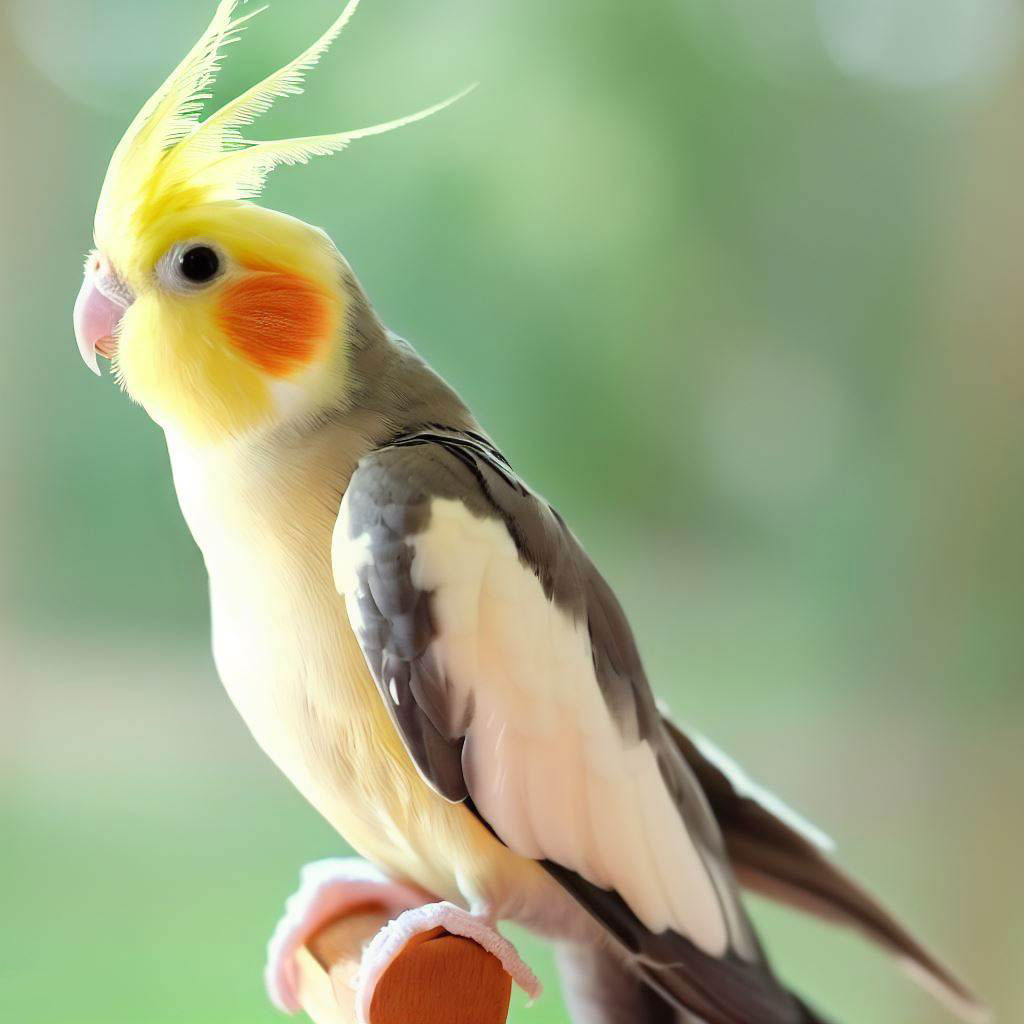
Budget-friendly Talkers: Cheapest Birds that Can Talk
For many bird enthusiasts, diving into the realm of talking avians is a dream come true. Yet, the financial investment can sometimes pose a hindrance. Fortunately, if you’re looking for the best talking birds for beginners without breaking the bank, several species offer great value for money. Let’s explore two of the most budget-friendly talkers that are both engaging and light on the wallet.
Budgerigars
Affordability and availability:
While the Budgerigar (or ‘Budgie’ as affectionately termed) has been previously spotlighted for its beginner-friendly attributes, it’s worth emphasizing its economic advantages. Budgies are amongst the most affordable pet birds available, making them a popular choice for novices and seasoned bird owners alike. Their reasonable pricing doesn’t translate to a compromise in quality – these small birds are vivacious, interactive, and incredibly adaptive to mimicking human speech.
Their widespread popularity ensures that they’re readily available in most pet stores and breeders. This means not only do you save money, but you also save on the time and effort involved in tracking down rarer species.
Example: Dave, on a tight budget but eager to embrace the world of pet birds, found his ideal companion in a vibrant green Budgie. Not only was it easy on his pocket, but its cheerful demeanor and talking attempts brought immense joy to his life.
Lovebirds
Not as vocal but can be taught basic phrases:
While Lovebirds might not be the first bird you’d associate with advanced mimicry, with patience and consistent training, they can pick up and replicate basic phrases. Their vibrant colors and sociable nature further make them a delightful addition to any household.
The range of their mimicry might be limited compared to some larger parrots, but what they lack in extensive vocabulary, they make up for in charm and enthusiasm.
Price range and care:
Lovebirds, compared to some of their larger parrot counterparts, come at a more budget-friendly price. On average, they are priced reasonably, with variations depending on the specific breed, age, and color mutations. While their care does require commitment – regular feeding, cage maintenance, and interaction – their upkeep costs are relatively manageable. A balanced diet of seeds, fresh fruits, and vegetables alongside toys and perches would keep them healthy and engaged.
Example: Rita, fascinated by the best talking birds for beginners but wary of the investment, was recommended Lovebirds by a fellow enthusiast. Their bright feathers and occasional mimicry, coupled with the economical aspect, made them an ideal choice for her.
In the vast world of avian pets, economic constraints shouldn’t deter you from enjoying the joys of a talking companion. Both Budgerigars and Lovebirds offer a fantastic entry point for those keen on a budget-friendly, interactive pet. While the depth of their mimicry varies, their affordability, charm, and potential for bonding make them stand out as the best talking birds for beginners on a budget.
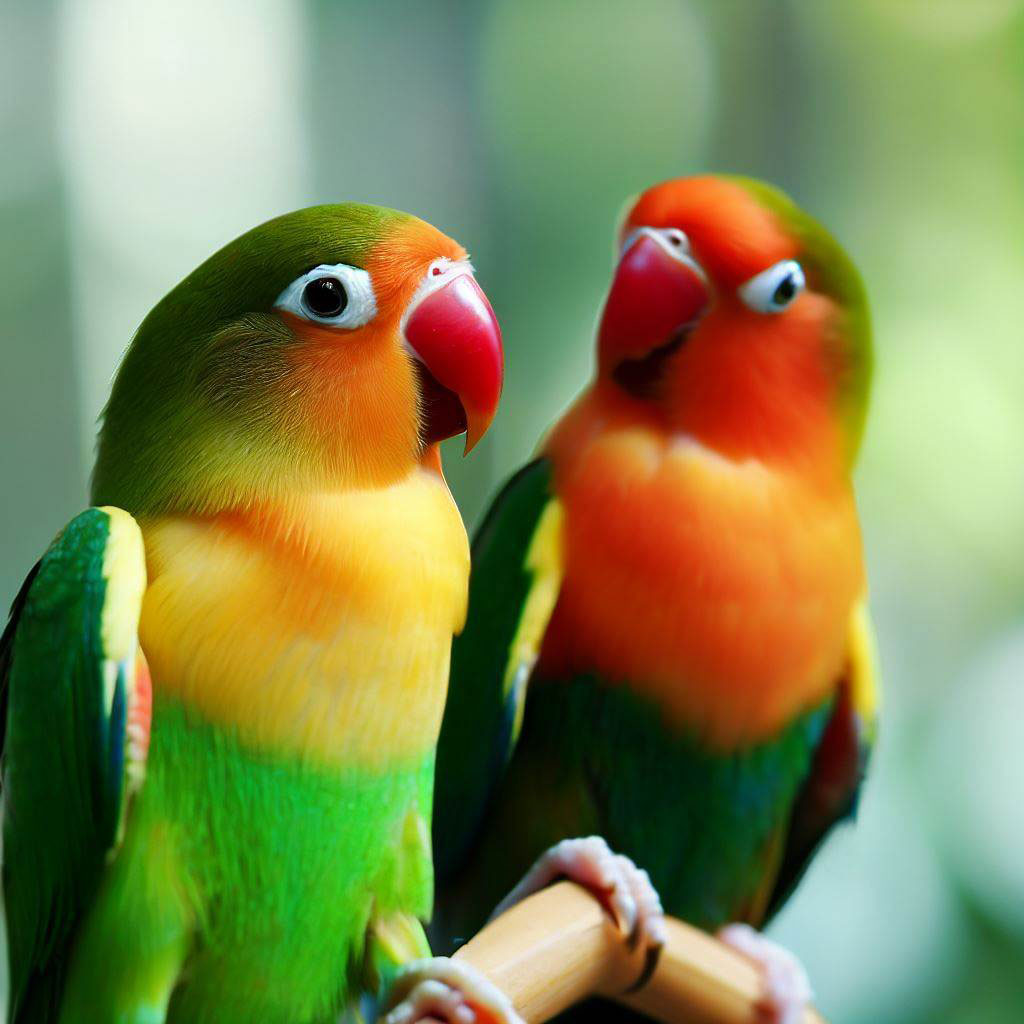
Intellectual Avians: Smartest Birds that Can Talk
When it comes to avian intelligence, many birds don’t just talk the talk – they also walk the walk. While their colorful feathers and engaging personalities are often the first things to capture our attention, their cognitive abilities can be equally astonishing. If you’re in search of the best talking birds for beginners that also display a high level of intelligence, you’re in for a treat. Let’s delve into the fascinating world of the most intellectual talking birds and their unique capabilities.
African Grey Parrots
Not just talkers but also problem solvers:
African Grey Parrots are often hailed as the Einsteins of the avian world. Their ability to mimic human speech is undeniably impressive, but their intelligence extends well beyond mere parroting. These birds exhibit exceptional problem-solving skills. Gift them with a puzzle toy, and you’ll witness firsthand their methodical approach to finding a solution. It’s not just about learning by rote; African Greys showcase an understanding and adaptability that’s riveting to observe.
Studies on their intelligence:
Scientific studies have consistently spotlighted the cognitive prowess of African Grey Parrots. One of the most notable cases is that of Alex, an African Grey who worked with researcher Dr. Irene Pepperberg for over 30 years. Alex could identify colors, shapes, and even comprehend abstract concepts like ‘bigger’ and ‘smaller’. He could count up to six and had a vocabulary of over 100 words. These discoveries challenged prior notions of bird intelligence, elevating African Greys to a new pedestal in our understanding.
Example: Imagine adopting an African Grey after researching the best talking birds for beginners and, over time, watching it distinguish between different materials, shapes, and even showing preferences. It’s not just about having a pet; it’s like having a perpetual learner by your side.
Macaws
The giants with a brain to match:
With their majestic wingspans and vivid plumage, Macaws are undeniably regal. However, it’s not just their size and beauty that captivate; their intelligence is equally commendable. As the largest parrots in the world, it’s perhaps fitting that they also possess one of the largest brain-to-body ratios in the bird kingdom.
Their ability to understand context:
While Macaws can mimic human speech, what’s truly remarkable is their capacity to understand context. They don’t just replicate sounds; they can use them appropriately. This contextual understanding hints at a deeper cognitive process, enabling them to interact with their environment and human companions in meaningful ways.
Example: Consider Maria, who brought home a Macaw after being intrigued by the best talking birds for beginners. Over the months, she noted that her Macaw would greet her with a “Good Morning” during the initial hours of the day and switch to “Good Evening” as dusk approached. The bird wasn’t just mindlessly mimicking but had grasped the context of these greetings.
When you delve into the realm of the best talking birds for beginners, you’re not merely getting a pet that parrots back phrases. With species like African Grey Parrots and Macaws, you’re investing in a relationship with some of the animal kingdom’s most intelligent members.
Their cognitive abilities are a testament to the fascinating potential of avian intelligence, and their companionship offers endless opportunities for learning and growth.
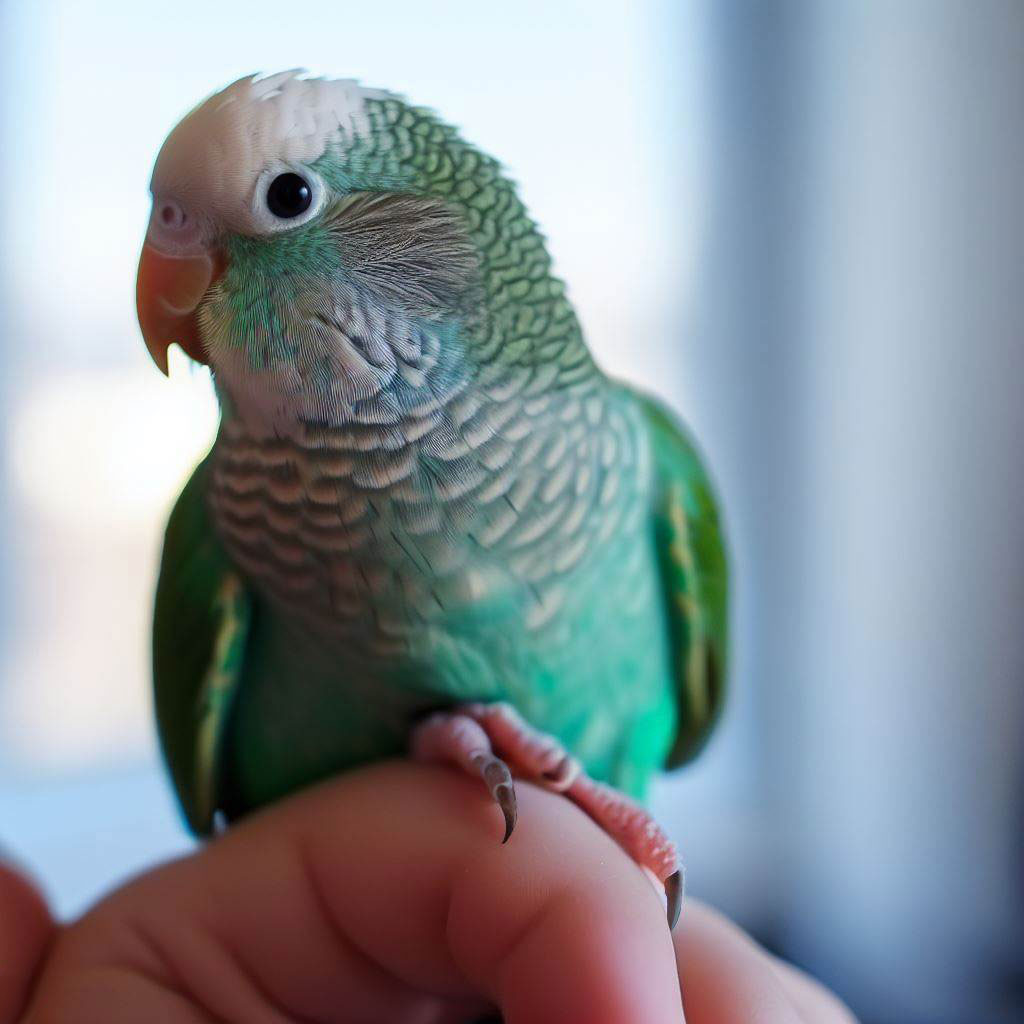
Best Talking Birds for Beginners: Conclusion:
As we draw this enlightening journey to a close, let’s circle back to our initial quest – identifying the best talking birds for beginners.
We’ve delved deep into the personalities, characteristics, and captivating traits of various bird species, each impressive in their unique right.
Whether you’re considering your first avian companion or simply deepening your appreciation for these feathered friends, there’s no doubt that the world of talking birds is as diverse as it is wondrous.
Recap of the best talking birds for beginners:
Budgerigars:
Affectionately known as ‘Budgies‘, these cheerful little birds rank high among beginner favorites. Their vibrant personalities, adaptability to human speech, and affordability make them a popular choice for those just stepping into the world of avian companionship.
Cockatiels:
With their iconic crested heads and playful demeanor, Cockatiels provide a mix of entertainment and companionship. Their talking ability, coupled with their endearing whistles and songs, adds a melodic touch to any home.
African Grey Parrots:
As we’ve discussed, the intelligence of these birds is nothing short of extraordinary. Their problem-solving abilities, paired with their knack for mimicking speech, places them among the upper echelons of avian intellect.
Amazon Parrots:
Vividly colored and full of life, Amazon Parrots are known not just for their vocal abilities, but also for their spirited personalities. They resonate with owners who appreciate both a talkative and interactive companion.
Canaries:
While they might not be the first name that springs to mind when considering talking birds, Canaries bring their charm to the table. Their pleasant chirps and occasional mimics make them a joy to have around, especially for those who enjoy melodious backgrounds.
Quaker Parrots:
Their natural tendency to chatter makes Quaker Parrots an engaging choice. Easy to bond with and ever so lively, they provide a constant source of amusement and companionship.
Lovebirds:
Compact yet full of character, Lovebirds may not be prolific talkers, but with patience, they can surprise with their mimicking abilities. Their vibrant colors and affectionate nature make them an adorable addition to the family.
Macaws:
The majestic giants of the bird world, Macaws are a sight to behold. Their impressive intellect and ability to understand context make them stand out, and while they require ample attention and care, their grandeur and wit are well worth the effort.
Example: For someone like Tim, a novice in the bird-owning world, this journey through the best talking birds for beginners opened his eyes. Initially inclined towards Budgies, his research here expanded his horizons, piquing interest in perhaps adopting a Quaker Parrot or even a Macaw in the future.
The importance of patience and consistent training:
Choosing the perfect bird is just the starting point. Unlocking the potential of your feathered friend hinges on the pillars of patience and consistent training. Regardless of the bird’s inherent ability to talk or mimic, without the right environment, patience, and consistent interaction, their skills might remain untapped.
Talking birds, like any pet, require time, attention, and emotional investment. The bonds you forge, the time you dedicate, and the love you pour into them directly correlate with the fulfillment and joy they bring into your life.
Example: Sarah, having read extensively about the best talking birds for beginners, decided to adopt a Canary. While she didn’t expect extensive conversations, her consistent engagement and patience bore fruit as her pet began mimicking some of her frequently used phrases, much to her delight.
In summation, the vast avian world is replete with possibilities. The best talking birds for beginners cater to a spectrum of preferences, budgets, and living conditions. Whether you gravitate towards the cheerful chirps of Budgies or the intellectual prowess of African Greys, remember that the foundation of every successful pet-owner relationship rests on understanding, patience, and consistent care.

FAQ: Best Talking Birds for Beginners
The world of talking birds is as vast as it is mesmerizing. As many embark on their journey to discover the best talking birds for beginners, questions naturally arise. Let’s tackle some of the most frequently asked queries on this topic.
What makes a bird good at talking?
Explanation on their anatomy, brain structure, and social nature:
Birds, especially those noted for their talking prowess, possess a unique vocal organ called the syrinx. This structure, situated at the base of their trachea, allows for the wide array of sounds they produce. Moreover, the cognitive capabilities of birds, particularly in species like African Grey Parrots and Budgerigars, are impressive. Their brain structures facilitate the memorization and repetition of sounds. Additionally, birds are inherently social creatures. In the wild, they communicate using complex calls and songs, and in a domestic setting, this translates to mimicking human voices or sounds from their environment.
How long does it usually take to teach a bird to talk?
Variables affecting the training duration:
The time frame varies significantly based on the bird’s species, age, individual personality, and the time invested by the owner. For example, a Budgie might start mimicking sounds in just a few weeks, while an African Grey might take a few months to start showing its true potential. Consistency, patience, and positive reinforcement play crucial roles in this process.
Are there any health benefits for birds that engage in talking or mimicking?
Mental stimulation and bonding with the owner:
Absolutely! Talking and mimicking can serve as vital mental exercises for birds. It keeps them engaged, reduces the chances of boredom-related behaviors, and fosters a stronger bond between the bird and its owner. An engaged bird is often a happier and healthier bird.
Why are African Grey Parrots often cited as the best talking birds?
Their renowned ability to mimic with clarity and understand context:
African Grey Parrots are not just mimics; they’re often astute observers who can associate words with meanings. For instance, the famous African Grey, Alex, demonstrated the ability to understand concepts like color and shape. Their clear vocalizations coupled with their cognitive capabilities make them stand out in the avian world.
Can all birds of the species mentioned talk?
Variability within species and individual personalities:
While certain species have a reputation as good talkers, it’s essential to understand that individual birds within these species might vary. Just like humans have varied talents and inclinations, not all African Greys or Budgies will necessarily talk. Their environment, upbringing, and individual temperament play significant roles.
How should a beginner start teaching their bird to talk?
Basic steps and methods to introduce talking:
Start simple. Choose short words or phrases and repeat them consistently during your interactions. Ensure the environment is quiet and free from distractions. Use positive reinforcement like treats or praises when they attempt to mimic. And remember, patience is your best friend in this journey.
Are there any tools or toys that can assist in teaching a bird to talk?
Devices and tricks that might aid the process:
Certainly! There are audio recordings and toys designed to repeat certain phrases, which can be played during the day. Mirrors can also sometimes motivate birds, especially Budgies, to communicate with their reflection. However, personal interaction remains the gold standard in teaching birds to talk.
Do birds talk because they understand the language or just mimic sounds?
Discussion on bird cognition and understanding versus mimicry:
While some birds, notably the African Grey, have demonstrated a certain degree of understanding, most birds mimic out of social instinct or as a form of play. However, with consistent training, many birds can associate words with actions or objects, showing a basic understanding of the context.
How do age and gender affect a bird’s ability to talk?
Insight into the best age to start training and if males or females are more predisposed to talk:
Younger birds typically learn faster and are more adaptable. It’s often recommended to start training when they’re young. As for gender, in some species like Budgies, males are generally more vocal and thus, more inclined to mimic human speech. However, individual variations always exist.
Is there a danger in teaching birds certain phrases or sounds?
Cautionary tales and advice on avoiding harmful or disruptive mimicry:
Yes, there is! Birds don’t discern between appropriate and inappropriate language. They can pick up swear words or alarming sounds like alarms, which they might repeat at inopportune moments. It’s best to be mindful of what’s spoken around them and avoid exposing them to potentially problematic sounds.
With these insights, the intriguing world of the best talking birds for beginners becomes clearer. Whether you’re an aspiring bird owner or a seasoned avian enthusiast, understanding these facets ensures a harmonious and enlightening journey with your feathered friend.
